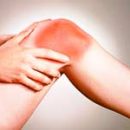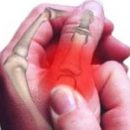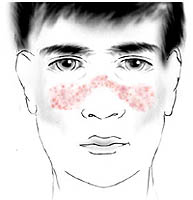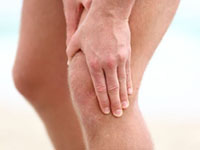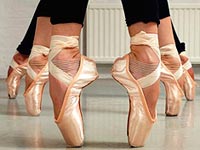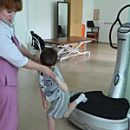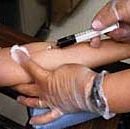Deforming osteoarthritis - chronic progressive diseases of the joints, systematically leading to complete immobilization of bone joints. How deforming osteoarthritis develops? His clinic, symptoms depending on the degree of pathological changes - in this article.
Content
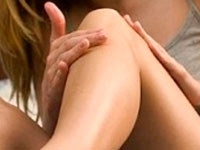 Deforming arthrosis — The disease that is characterized by degenerative dystrophic changes in the joints. Depending on the causes and nature of primary changes, arthrosis is primary and secondary. And in one and in another case — This is the neighborhood of arthrosis and synovitis, with the only difference that, with primary arthrosis, the inflammation of the synovial shell develops later, and with secondary — preceded the phenostsy phenomena.
Deforming arthrosis — The disease that is characterized by degenerative dystrophic changes in the joints. Depending on the causes and nature of primary changes, arthrosis is primary and secondary. And in one and in another case — This is the neighborhood of arthrosis and synovitis, with the only difference that, with primary arthrosis, the inflammation of the synovial shell develops later, and with secondary — preceded the phenostsy phenomena.
Arthrosis, Sinovit: What Primary?
Primary osteoarthritis of arms and legs occurs as a dystrophy of the artician cartilage, leading to a decrease in its ability to withstand loads. Microtrauma and the subsequent destruction of cartilage is accompanied by the damage to the epiphysis bones and the formation of osteophytes trauming the synovial sheath of the joint. From this point on, primary arthrosis accompanies the synotic, aggravating cartilage dystrophy.
Symptoms of secondary osteoarthrosis more often grown from the arthritis clinic. In this case, the synotic is usually preceded by a cartilage dystrophy, it becomes the root cause of disruption of its nutrition and the rapid subsequent destruction. In the presence of an intra-articular fracture, violations of the congruence of the joint surfaces deforming osteoarthritis is diagnosed immediately into 2 degrees, bypassing the initial stage of the disease, and for 4-5 months, it leads to the immobilization of the joint.
Deforming osteoarthritis: clinic
In osteoarthritis clinic, it is customary to distinguish three stages, characterized typical of the disease typical and objective manifestations, radiological symptoms.
Deforming osteoarthritis 1 degree
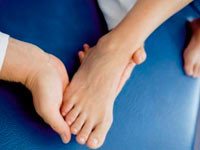 External manifestations of initial arthrosis are pretty scarce, although with a detailed examination already at this stage you can detect signs of dystrophy of the articular cartilage. There is a quick fatigue of the limb, some stiffness of the muscles after a long rest. With the 1st degree of deforming osteoarthrosis, the symptom of restriction of movements in the joint — Rare phenomenon, like pain in the joint.
External manifestations of initial arthrosis are pretty scarce, although with a detailed examination already at this stage you can detect signs of dystrophy of the articular cartilage. There is a quick fatigue of the limb, some stiffness of the muscles after a long rest. With the 1st degree of deforming osteoarthrosis, the symptom of restriction of movements in the joint — Rare phenomenon, like pain in the joint.
Deforming osteoarthritis develops unnoticed. With 1 degrees of disorders, patients usually do not apply to the doctor, only if the disease is primary. Under arthritis, proclaiming the prevalence in the clinical picture of the arthrosis of synovite phenomena, already at the very beginning of the disease, pain and swelling of the joint appear, which cannot remain unnoticed.
Osteoarthritis, the symptoms of which are rooted into the injury of the joint, initially manifests itself pain and restriction of movements, because the integrity of cartilage is. Splits of cartilage tissue wander in the custody of the joint, irritating the synovial shell, causing synotes and accompanying his pain. If the distance between flurshes of cartilage is more than 2 mm, then healing is under the formation of bone corn, which disturbed the congruence of the joint surfaces acting as a factor that reduces the depreciation characteristics of the cartilage tissue and leading to damage to the bone.
X-ray signs of deforming osteoarthrosis 1 degree — This is a narrowing of the articular slit and light sclerosis, that is, bone sealing in the subchondral plate zone. With post-traumatic arthrosis in the ripping zone of cartilage visualizes bone corn, but this is already, rather, a sign of deforming arthrome 2 degrees.
Deforming arthrosis of 2 degrees
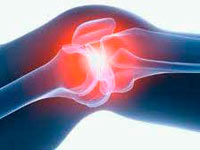 In the second stage of its development, osteoarthritis is characterized by the symptoms of the growing restriction of movements. Wandering inside the joint cavity fragments of the pinched cartilage tissue cause the appearance of a crunch in the joint and its blockade.
In the second stage of its development, osteoarthritis is characterized by the symptoms of the growing restriction of movements. Wandering inside the joint cavity fragments of the pinched cartilage tissue cause the appearance of a crunch in the joint and its blockade.
Deforming osteoarthritis in stage 2 is characterized by the deformation of the joint, the restriction of its mobility by contracting and hypotrophy muscles, as well as the appearance of chromotype.
Joint pain is most pronounced «at the start». Its appearance is due to the fact that at first the load falls on the modified, «Painful» Part of cartilage. When during the movement of cartilage «adapts» and the load is redistributed evenly throughout its surface, pain disappears. By the end of the day, when accumulating «fatigue» The articular tissues, pain appear again, but in this stage of arthrosis they still pass after a long stay, which you will not say about the next stage of the development of the disease.
For arthosis in the second stage, the change of periods of increased pain periods of its complete disappearance. This is due to the layering on the symptoms of osteoarthritis clinic of inflammation of the synovial shell flowing wave-like.
The X-ray of the second stage of arthrosis is expressed in the appearance of osteophytes, a sharp narrowing of the joint gap and sclerosis of the subchondral zones of bone epiphysis.
Deforming arthrosis of 3 degrees
The third degree of arthrosis is characterized by permanent pains, a complete immobilization of the joint with the preservation of the ability to low-amplitude passive movements. The patient is not able to move independently and is forced to use crutches or cane.
On the radiograph: the complete absence of the articular slit, the deformation of the joint surfaces, multiple cysts in the subchondral zones of epiphysis bones

